Avian and Insectoid Ocular
Adaptations
Looking at how
birds and insect eyes have adaptated to assist in finding food and mates
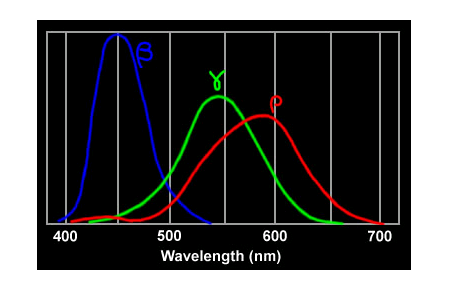
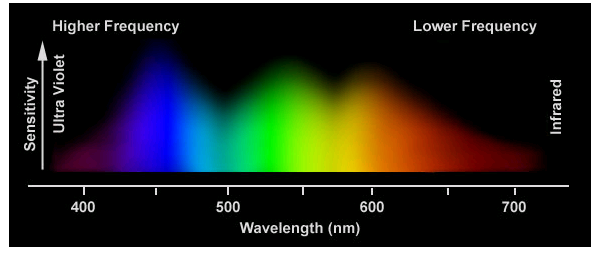
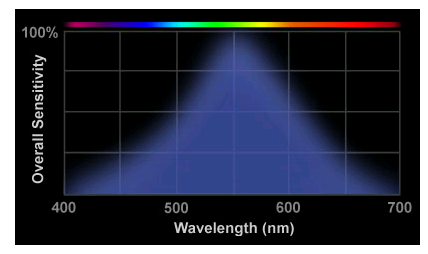
(For a lab report from a lab in which I looked at the function of a spectrometer, and the absorbance and transmittance of colored solutions, click here.)
Bird and insect UV sensitivity makes food easier to find, desirable mates clearer to distinguish, and home an easier place to track. It is hard for us to really understand what birds and insects see, because we cannot see it the same way. We can use instrumentation to sense and quantize the presence of other wavelength emissions, but we cannot see them. However, we do know that birds and insects see things very differently from humans, due to the differences in types of receptors.
Food: Insects, more than birds, use their UV sensitivity to find food. Coloring of different plants and flowers will appear much more vivid to an insect than it might to the human eye. Sometimes this helps the insect focus on a particular portion of the flower, other times it just makes the plant easier to distinguish from its surroundings, as in the images below:
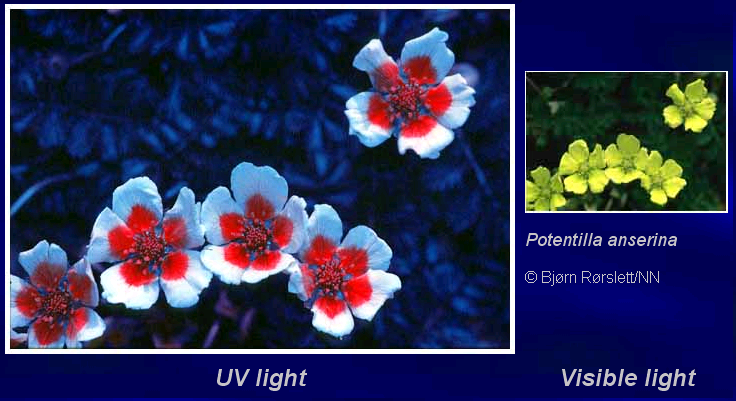
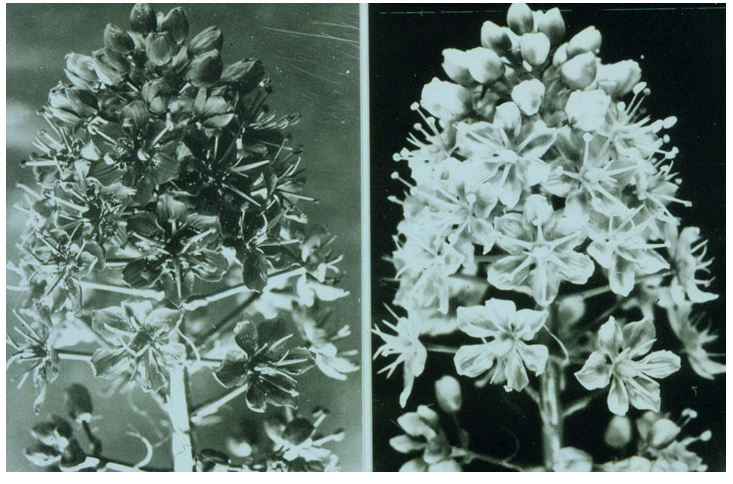
Other times, it can mean a reduction in food-source competition. Some studies suggest that the coloration of butterfly wings corresponds to the color-sensitivity that butterfly has. As a result, this could reduce food-source competition by making different plants a desirable target for different butterflies. Birds also use their UV sensitivity to distinguish their prey from its surroundings. Since many organisms use camouflage for safety from predators, the UV sensitivity increases the birds' ability to see past the camouflage.
Mating: Both birds and insects use UV sensitivity to find desirable mates. Studies suggest that both maturity and ability to produce quantities of offspring contribution to the UV coloration. In fact, hunters are now trying to use this scientific knowledge in their pursuit of the better decoy. Decoys and paints are now widely available for purchase that claim to respond to bird UV sensitivity, making the birds more likely to fall for the hunter's decoys. The imgae below is from a controlled study which looked at UV sensitivity and mating in birds. What was found was that the birds with suppressed UV were found to be less desirable than those with unsuppressed UV coloration.
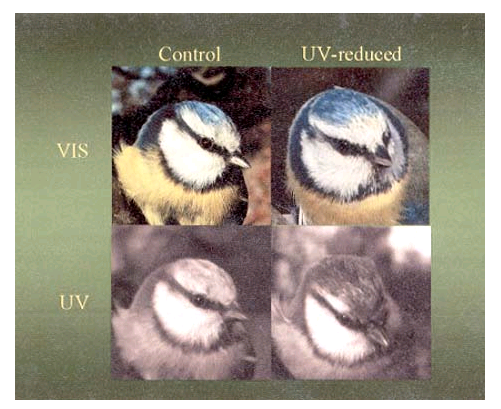
Getting Home: Insects use their UV sensitivity, combined with their ability to "see" polarized light as a compass to find the direction of home. Since the bulk of their polarization-sensitive receptors are in the portion of the eye that can see "upward" and limited to the UV sensitive receptors, the insect looks to the sky to find its way home. Since UV light gets through cloud-cover more easily than visible, the polarized UV light that is present in the atmosphere becomes a sort of contour map that provides the information the insect needs to locate its position, and its relation to its target. Interestingly, this adaptation also helps some insects, bees in particular, signal locations of food sources to fellow insects. Once a food source is found, the bee maps the location using its ability to see polarization, then returns to the hive and does a "dance" that signals to the other bees the location of the food source. Monarch butterflies use their ability to see the UV range when they complete their migration patterns, which are thousands of miles in distance.